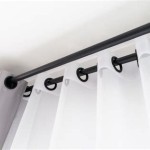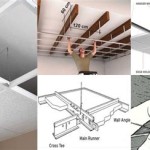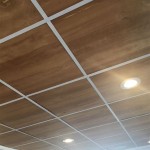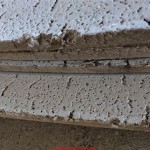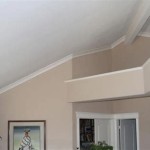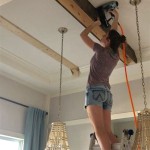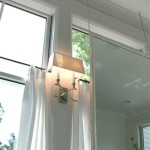Hang A Hammock From The Ceiling: A Comprehensive Guide
Hanging a hammock indoors offers a unique opportunity to create a relaxing and comfortable space within a home. A ceiling-mounted hammock provides a stylish alternative to traditional furniture and can transform a room into a personal oasis. However, ensuring the safety and stability of the installation is paramount. This comprehensive guide outlines the steps involved in correctly and securely hanging a hammock from the ceiling.
Before any installation takes place, a thorough assessment of the ceiling structure is necessary. Not all ceilings are created equal, and the structural integrity will dictate whether a hammock can be safely supported. Understanding the joist system and weight-bearing capacity is crucial to preventing potential accidents and ensuring a long-lasting installation.
This guide will walk through the essential aspects of selecting the right hardware, locating suitable ceiling joists, properly installing mounting hardware, and safely hanging the hammock. By following these instructions meticulously, individuals can enjoy the comfort of an indoor hammock with peace of mind.
Identifying Suitable Ceiling Joists
The most critical step in hanging a hammock from the ceiling is identifying suitable ceiling joists. Joists are horizontal structural members that support the ceiling's weight and distribute it to the walls. Attaching a hammock to drywall alone is inadequate and will result in failure. The hammock must be securely anchored to solid joists.
Several methods can be used to locate joists. A stud finder, readily available at hardware stores, is a convenient electronic tool that detects changes in density behind the drywall. When moved across the ceiling, it will indicate the edges of a joist with an audible or visual signal. Experimentation might be needed to distinguish between electrical wiring and actual joists.
Another method is using a magnetic stud finder. These devices rely on magnets to detect the nails or screws used to attach the drywall to the joists. While less precise than electronic stud finders, they can be effective, particularly if the user understands the standard spacing of the ceiling joists. In most residential constructions, joists are spaced either 16 inches or 24 inches apart on center. Measuring from a known point, like a wall, and marking every 16 or 24 inches can help pinpoint potential joist locations.
If electronic or magnetic stud finders are unreliable, a more manual approach can be employed. Carefully drilling small pilot holes along a suspected joist line can reveal its presence. If the drill bit encounters solid wood, that confirms a joist. However, if the bit passes through only drywall, that indicates no joist is present. These pilot holes can be easily patched with spackle after the joist is located.
Once a joist is located, it is essential to determine its direction. Joists typically run perpendicular to the shortest wall of the room. Knowing the orientation of the joists aids in selecting the optimal hammock hanging position.
After locating and identifying a joist, it's crucial to assess its condition. Older homes may have joists that are weakened by rot, insect damage, or previous repairs. If the joist appears compromised, it should not be used to support a hammock. Consult a structural engineer or qualified contractor if there are any concerns about the joist's integrity.
Selecting Appropriate Hardware and Tools
Choosing the right hardware is just as crucial as locating suitable joists. Using inadequate hardware can lead to failure and potentially dangerous consequences. The hardware must be specifically designed for overhead suspension and capable of handling the dynamic weight of the hammock and its occupant(s), with a significant margin of safety.
Eye bolts are a common choice for hammock suspension. However, standard eye bolts may not be suitable for overhead loads. Look for forged eye bolts with a shoulder, designed to withstand angled pulls. The eye bolt's working load limit (WLL) must be clearly marked and should significantly exceed the anticipated weight. For example, if the hammock is intended for a single person weighing 200 pounds, the eye bolt should have a WLL of at least 400 pounds, to account for dynamic loads during movement.
Alternative options include specialized hammock hanging kits available from reputable retailers. These kits typically include mounting plates, carabiners, and chains or straps. Ensure the kit is specifically designed for ceiling mounting and has a certified weight rating that exceeds the anticipated load.
Carabiners are essential for connecting the hammock to the mounting hardware. Choose locking carabiners made from steel or aluminum alloy. Locking carabiners prevent accidental detachment of the hammock. The carabiners' WLL should also exceed the combined weight of the hammock and its occupant(s).
Chains or straps are used to adjust the hammock's height and tension. Chains offer greater adjustability but can be heavier and noisier. Straps are lighter and quieter but may offer less precise adjustment. Look for straps made from durable materials like nylon or polyester with reinforced stitching. The WLL of the chains or straps should also be taken into account.
In addition to the mounting hardware, several tools are required for installation. A drill with drill bits appropriate for wood and the chosen hardware is essential. A level is needed to ensure the mounting hardware is installed straight. A socket wrench or adjustable wrench is used to tighten the fasteners. A measuring tape is required to accurately space the mounting points. Safety glasses should always be worn to protect the eyes from debris during drilling.
The length of the chain or strap will depend on the height of the ceiling and the desired height of the hammock. A general rule of thumb is to hang the hammock with the lowest point about 18 inches off the floor, but this can be adjusted based on personal preference. Consider the sag of the hammock when occupied and adjust the hanging height accordingly.
Proper Installation and Safety Considerations
Once the appropriate hardware and tools have been gathered, and the joists have been identified and assessed, the installation process can begin. Accuracy and attention to detail are crucial at this stage to ensure a safe and secure installation.
Begin by marking the precise locations for the mounting hardware on the joists. Use the measuring tape and level to ensure the marks are equidistant from the center of the joist and aligned horizontally. Misaligned mounting points can cause uneven weight distribution and strain on the hardware.
Drill pilot holes at the marked locations. The diameter of the pilot holes should be slightly smaller than the diameter of the eye bolt or mounting plate screws. Drilling pilot holes prevents the wood from splitting during installation.
Install the eye bolts or mounting plates. If using eye bolts, screw them into the pilot holes, turning them clockwise until they are firmly seated. Ensure the eye bolt is fully threaded into the joist. If using mounting plates, align them over the pilot holes and secure them with screws. Use screws that are long enough to penetrate deeply into the joist but not so long that they protrude through the ceiling.
After installing the mounting hardware, test its stability before hanging the hammock. Apply gradual weight to the hardware, checking for any signs of movement or loosening. If any instability is detected, re-evaluate the joist's condition and the installation process. It may be necessary to reinforce the joist or relocate the mounting points.
Once the mounting hardware is deemed secure, attach the carabiners to the eye bolts or mounting plates. Then, connect the chains or straps to the carabiners. Adjust the length of the chains or straps to achieve the desired hammock height and tension.
Finally, attach the hammock to the carabiners. Ensure the hammock is properly centered and balanced. Before fully committing weight to the hammock, carefully test it by applying gradual pressure. Check for any signs of stress or strain on the hardware. If everything appears stable, slowly and cautiously enter the hammock.
Regularly inspect the mounting hardware, chains or straps, and hammock for wear and tear. Check for loose screws, frayed straps, or signs of rust. Replace any damaged components immediately. Over time, the hardware may loosen due to the dynamic weight and movement of the hammock. Periodically tighten the screws and bolts to maintain a secure connection.
Always adhere to the weight limit of the hammock and the mounting hardware. Overloading the hammock can lead to failure and potentially serious injuries. It's crucial to remember that the weight limit is not just for static weight, but also for dynamic loads generated by movement. Avoid sudden or jerky movements in the hammock, as these can significantly increase the stress on the hardware.
By following these guidelines, individuals can successfully and safely hang a hammock from the ceiling, creating a comfortable and relaxing space within their home. Remember, safety is paramount, and meticulous attention to detail is essential throughout the entire process.

How To Hang A Hammock From Ceiling Simply Hammocks

How To Hang A Hammock Chair From The Ceiling Erfly House

A Simple Guide To Hanging Hammock Sunny Guard

How To Hang A Hammock Chair From The Ceiling Erfly House

How To Hang A Hammock Indoors Republic Of Durable Goods

Everything You Need To Know About How Hang A Hammock Outdoors Universe

How To Hang Your Hammock Guide Sleepy

How To Hang A Hammock Indoors And Outdoors

How To Hang A Hammock Chair From Ceiling Caribbean Hammocks

How To Hang A Hammock Chair From The Ceiling Erfly House
Related Posts

